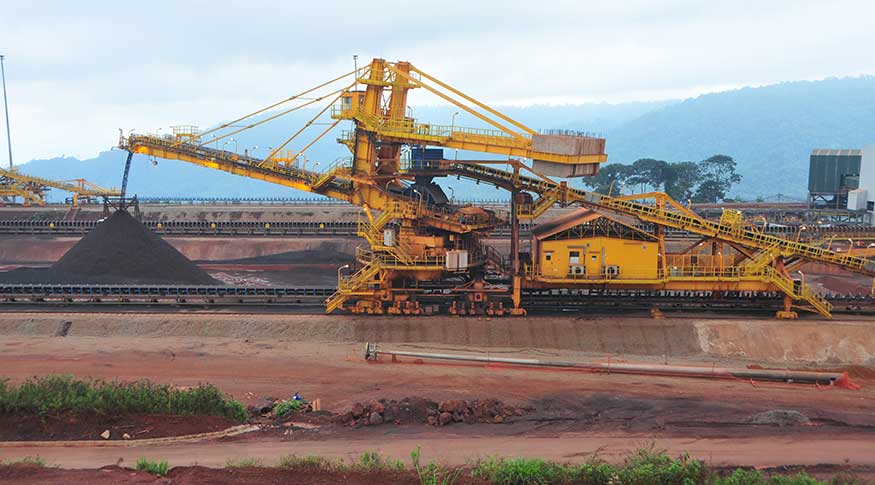IPP
Inflation in industry up 0.29% in January and stops series of drops
March 03, 2023 09h00 AM | Last Updated: March 07, 2023 01h36 AM

The last one of a series of five consecutive drops, prices of industry rose once more, and recorded and increase of 0.29% in January 2023, against December 2022. The cumulative Producer Price Index (IPP) in 12 months is 2.24%. In January 2022, the rate was 1.20%.
In January 2023, 14 of the 24 activities of industry recorded positive price changes against the previous month, as the change observed in general industry. On the other hand, 11 activities had recorded higher average prices in December against the previous month. The data were released today (3) by the IBGE.
“The January result comes after five consecutive decreases, when there was a cumulative drop of 7.37% in IPP. This is the lowest positive result since September 2021 (0.25%). There is a clear difference between mining and quarrying industry and manufacturing industry. Whereas all manufacturing ones remained on a downward trend, mining and quarrying industry reversed seven consecutive months of decrease and recorded the main hike among all sectors surveyed,” says Murilo Alvim, IPP analyst.
The activities of industry accounting for the main contributions to the January result were mining and quarrying industry (0.42 p.p.), petroleum refining and biofuels (-0.18 p.p.), beverages (0.12 p.p.) and food products (0.12 p.p.).
In a comparison between January 2023 and December 2022, prices of this sector of mining and quarrying industr changed, on the average, 9.62%. That is the first positive result since May 2022, when it recorded 12.55%. With the result of January, the cumulative index in 12 months was -7.85%, a little less tha observed in the end of 2022, -7.92%. “Iron ore was the main responsible for this increase. The wuotation of the product in the international market was affected by an estimated increase in demand, as a consequence of a possible economic recovery of China,” Mr. Alvim says.
With the second main influence on the index of January, prices of the sector of petroleum refining and biofuels changed, on the average, -1.50%. The result was negative as that in December (-5.48%), with less intensity. In 12 months, the change was 6.69%, the lowest since January 2021 (-1.22%). There was a drop in prices of diesel and aviation kerosene, petroleum products, besides alcohol.
Prices in the beverage sector rose 5.30% from the previous month, and the highlight was the second biggest change in the country and the third main influence among all. This result is also the thirds biggest change since the beginning of the series in 2010 (lower than in October 2015 and September 2014, with 9.57% and 7.08% respectively) and the biggest change for a month of January in this series. Another factor that call our attention is the rise of 16.54% in prices of the sector, in omparison with January 2022. “The product “beer and draft beer” accounted for the main contribution to the result, similar to what took place in January last year. The high demand observed in the summer was taken as opportunity for companies to raise prices,” Mr. Alvim recalls.
The sector of food products recorded an average change of 0.48%. As a result the cumulative index in 12 months, which had closed 2022 at 5.03%, advanced to 5.74%. The rise of prices of dairy products. related to weather conditions that led to the rise of production costs, and of the group sugar refining, due to the reduced supply in the period between sugarcane harvest, together with an increase of foreign demand for products, were the main ones making the segments the foourth main influence on the January index.
Among the major economic categories, the price changes from December 2022 to January 2023 were the following: -0.07% in capital goods (BK), 0.35% in intermediate goods (BI), and 0.28% in consumer goods (BC), being the change reported in durable consumer godds of 0.55% and that in semi and non-durable consumer goods, of 0.23%.
Know more about the IPP
The Producer Price Index - IPP, whose scope is the mining and manufacturing industries, aims at measuring the average change of sale prices received by domestic producers of goods and services, as well as its evolution over time, signaling the short-term inflationary trends in Brazil. It is a key indicator for the macroeconomic follow up and, consequently, a valuable analytical instrument to decision takers, either public or private. The survey investigates, in a little more than 2,100 enterprises, the prices received by producers, free from tax, tariffs and freight, defined according the most usual commercial practices. Nearly 6,000 prices are collected monthly. Adopting the National Classification of Economic Activities (CNAE 2.0), the IPP produces indicators for 24 activities in the mining and manufacturing industries, besides reorganizing the same data into major economic categories, split into capital goods, intermediate goods and consumer goods (durable and semi-durable and non-durable).




















